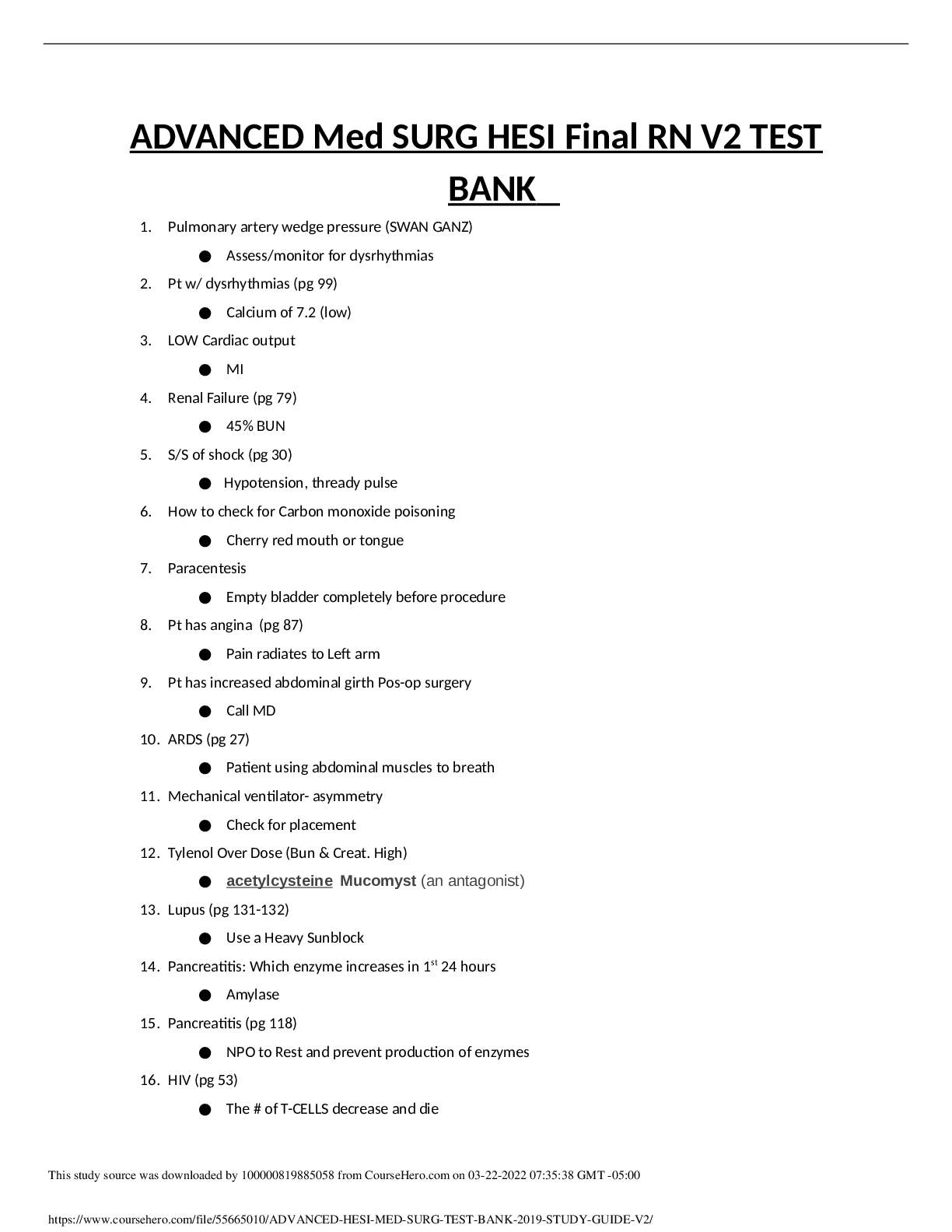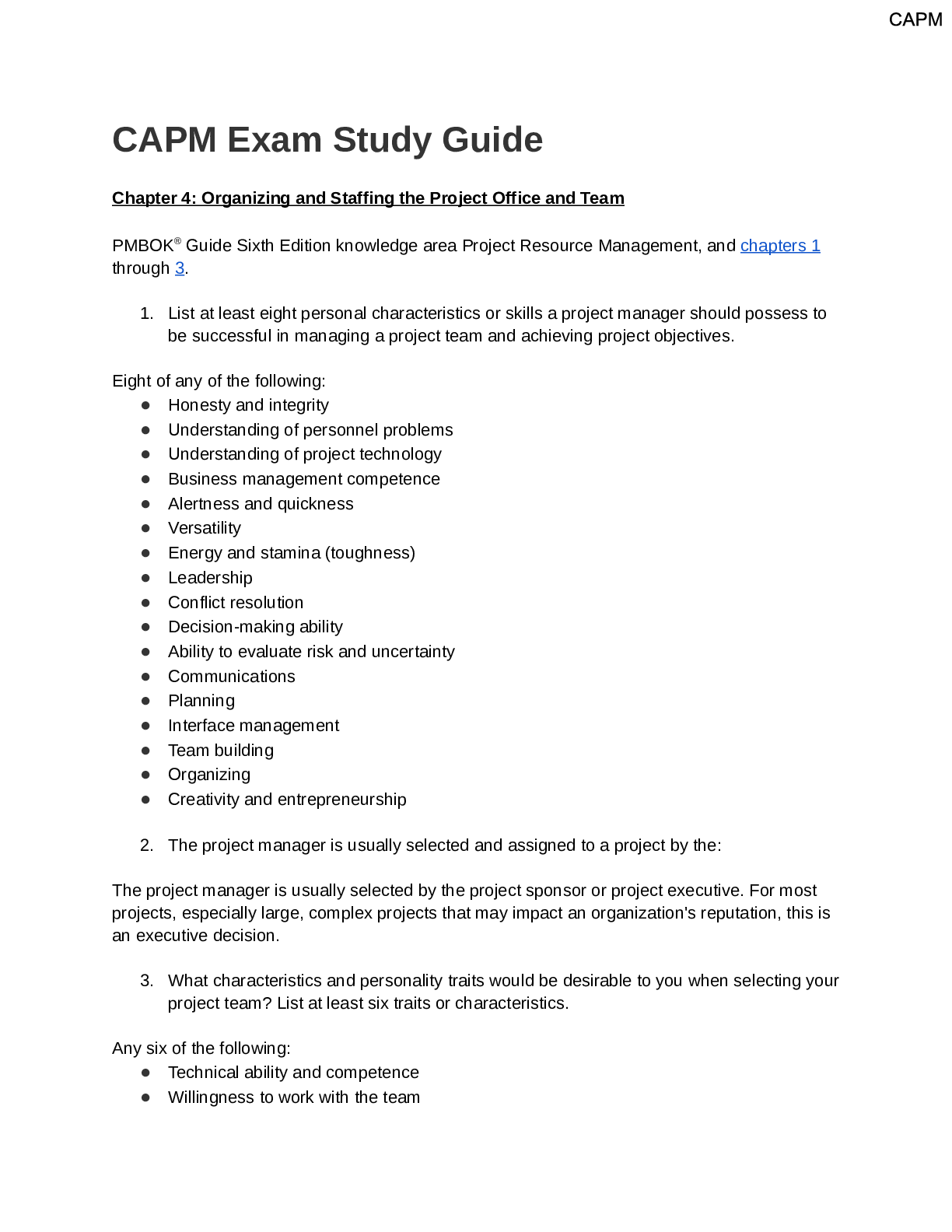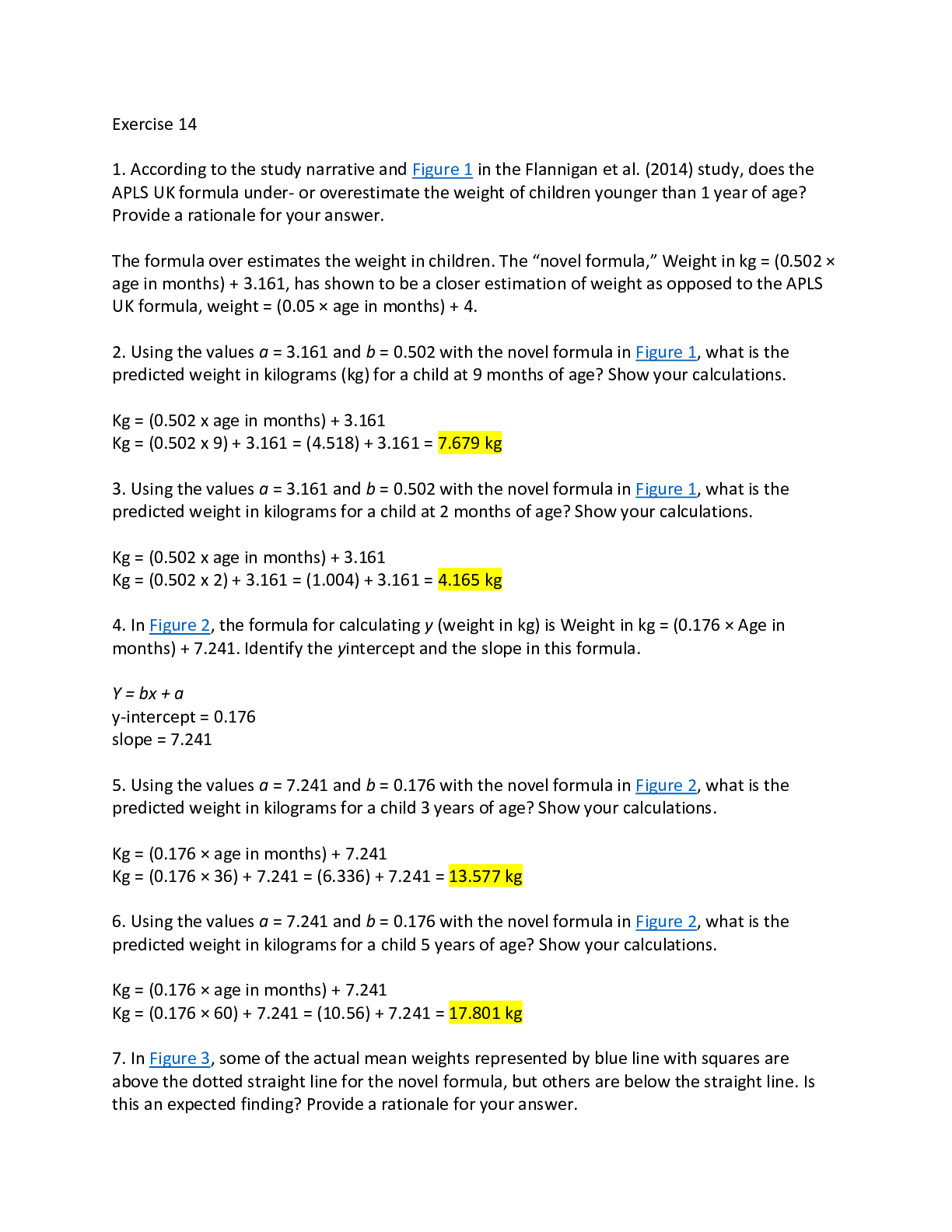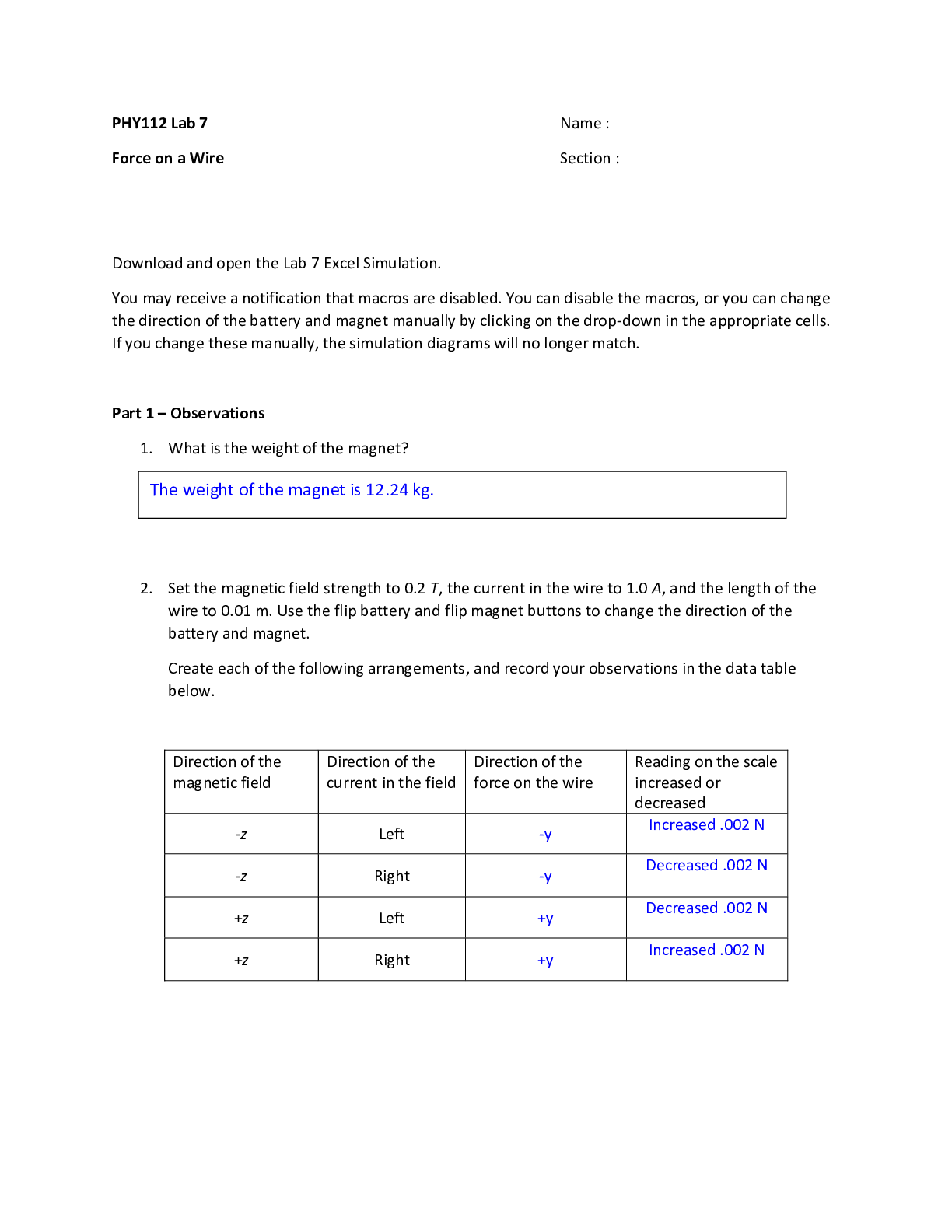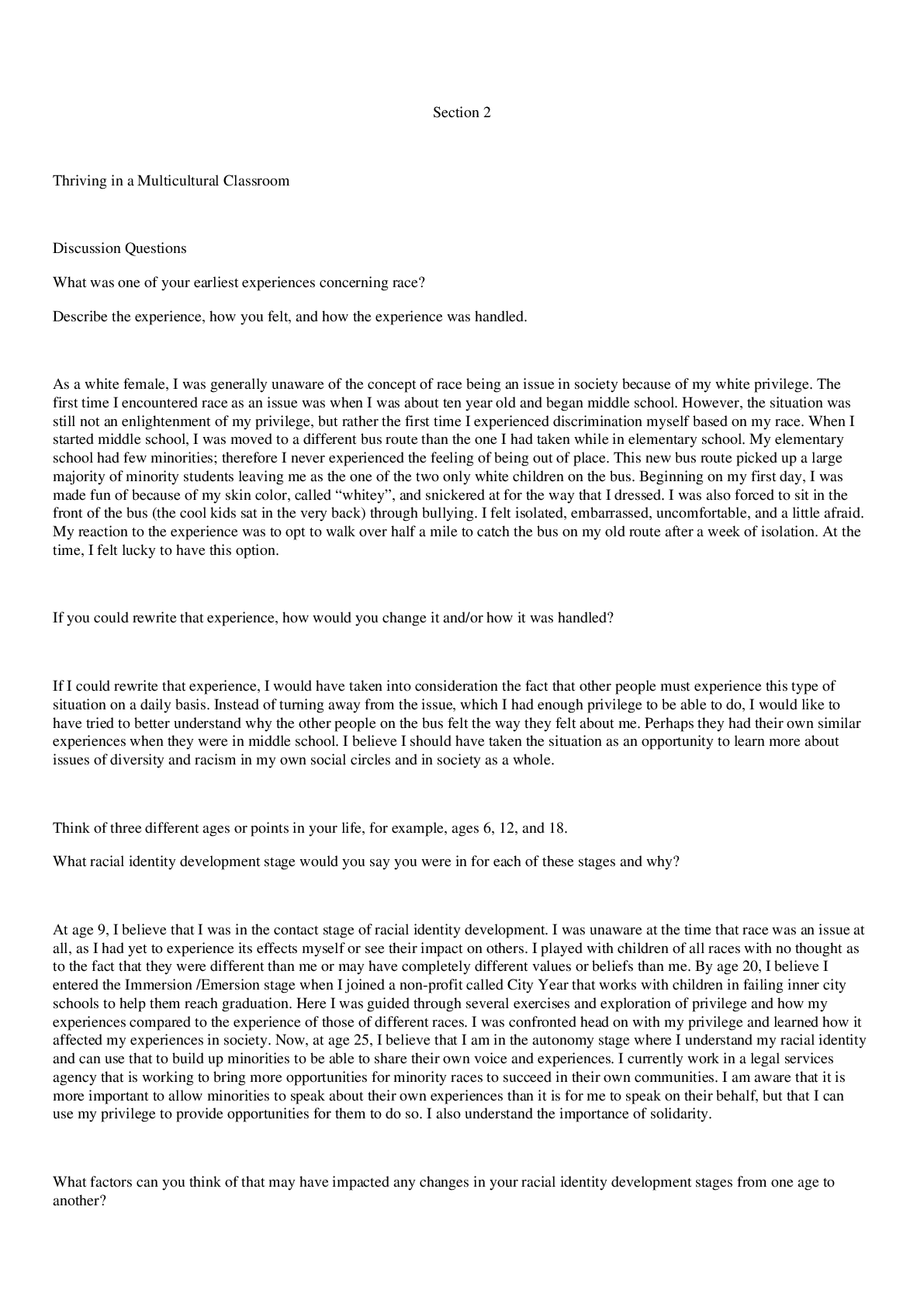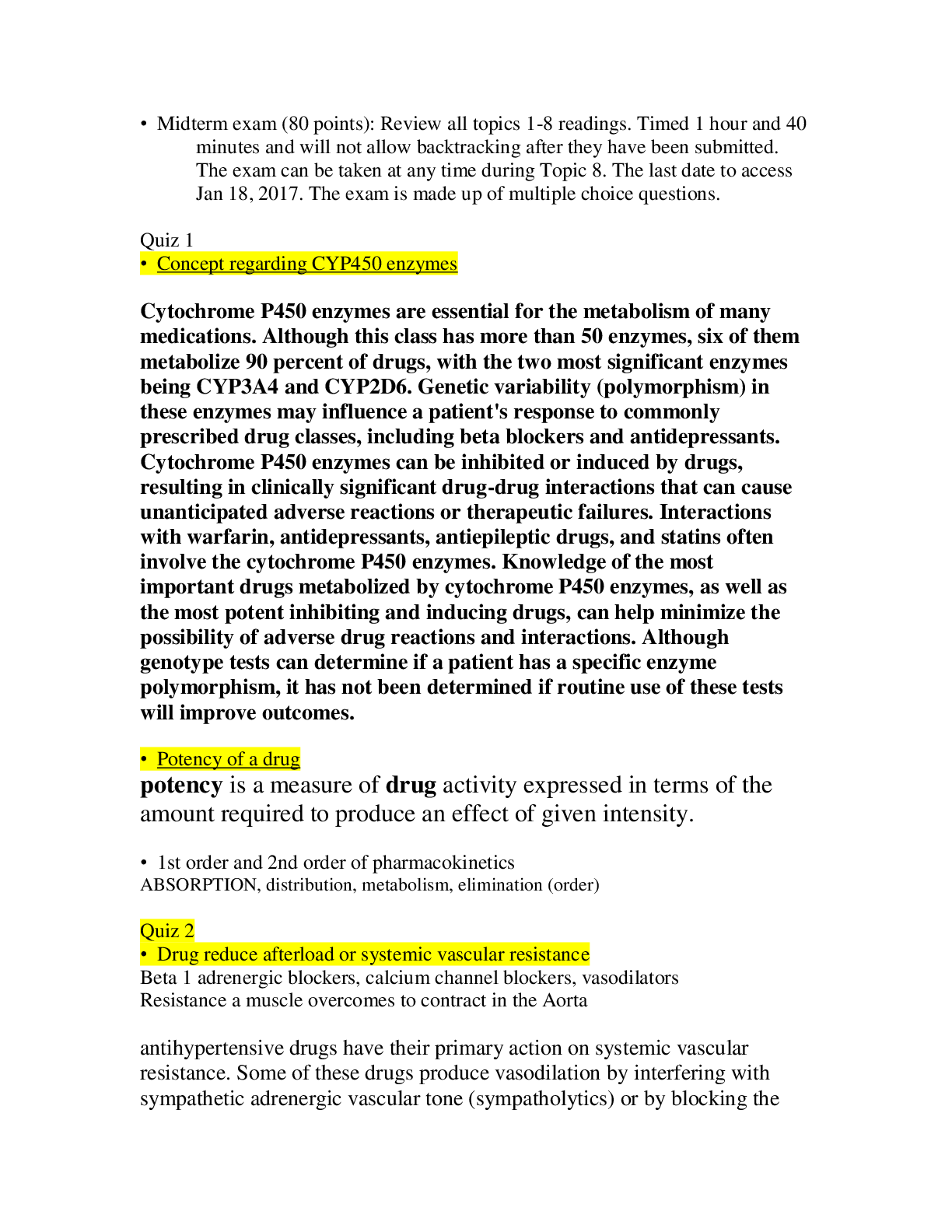Health Care > STUDY GUIDE > MCH final exam review (All)
MCH final exam review
Document Content and Description Below
Dysmenorrhea -Painful period- could be from endometriosis, or fibroid. -Heating pads, exercise, stretching, good nutrition, avoid alcohol and drugs, decrease caffeine. Heat, NSAIDS is most common pre... scribed. Normal bleeding: Friability or easy bleeding of cervix when scraped (after sex or vaginal exams) is normal. Leukorrhea : Is a white or gray discharge with a musty odor, normal during pregnancy, do not douche or wear tampons, peri-pads are ok. Since vaginal pH increases from 4-6.5 mother at risk for yeast infections. Hyperemesis Gravidarum a problem of extreme nausea and vomiting causing electrolyte imbalance, dehydration and severe weight loss What is the nursing intervention for Hyperemesis? Advise to take multivitamins regularly, Promote Rest Teach to avoid foods and stimulus that evoke vomiting; avoid spicy foods, eat crackers early in the morning Eat small frequent meals; bland food, high protein Ginger capsule beneficial for vomiting (In hospital) - NPO and antiemetic’s administers IV Therapy- fluids with dextrose and vitamins are given. Breast changes in pregnancy are due to estrogen-progesterone production. -The breasts may have a feeling of fullness, tingling or tenderness. - The breast size increases and the areola of the nipple darkens and the vascularity increases. -The secretions from the sebaceous glands (Montgomery tubercles) help keep the nipple supple and prevent cracking. -By the 16th week of pregnancy colostrum can be expelled from the nipples. Linea nigra Is a dark colored line extending from symphysis pubis to top of fundus, common. Striae gravidarum AKA stretch marks common, fade but never disappear. Morning sickness is due to: secretion of hCG by placenta, subsides end of 1st trimester, management includes eating crackers upon awakening and eating small frequent meals. Placenta previa An implantation of the placenta in the lower uterine segment, near or over the internal cervical os. It accounts for 20% of all antepartal hemorrhages. There are three different types of placenta previa: Complete (total)-covers entire cervical os. Partial-partially occludes the cervical os. Marginal-encroachment of the placenta to the margin of the cervical os Risk factors: conditions that cause scarring of the uterus (C-section, multiparity, increased maternal age), large placental mass, smoking, cocaine use, prior history of placenta previa, closely spaced pregnancies [Show More]
Last updated: 2 years ago
Preview 1 out of 14 pages
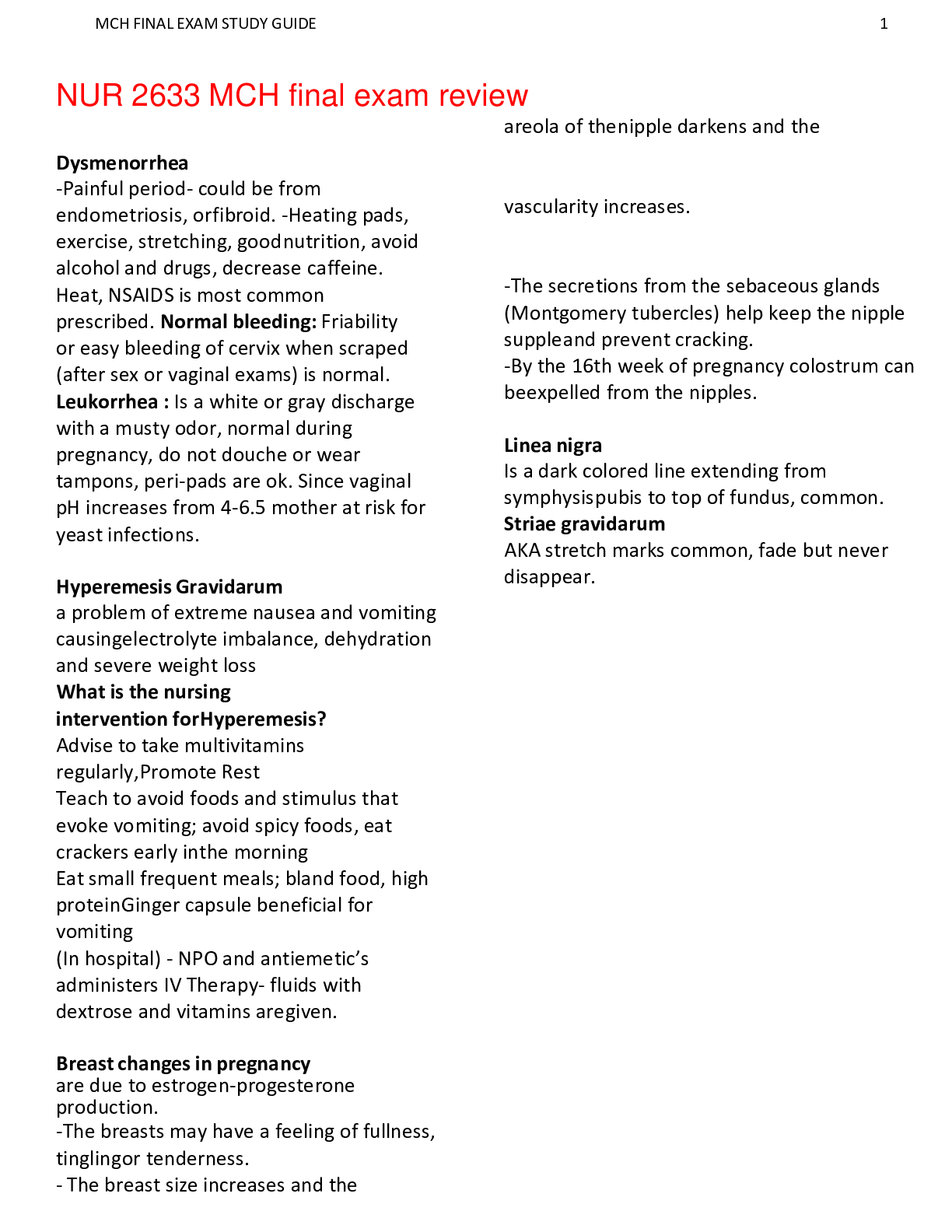
Buy this document to get the full access instantly
Instant Download Access after purchase
Buy NowInstant download
We Accept:

Reviews( 0 )
$9.00
Can't find what you want? Try our AI powered Search
Document information
Connected school, study & course
About the document
Uploaded On
Aug 17, 2021
Number of pages
14
Written in
Additional information
This document has been written for:
Uploaded
Aug 17, 2021
Downloads
0
Views
62

